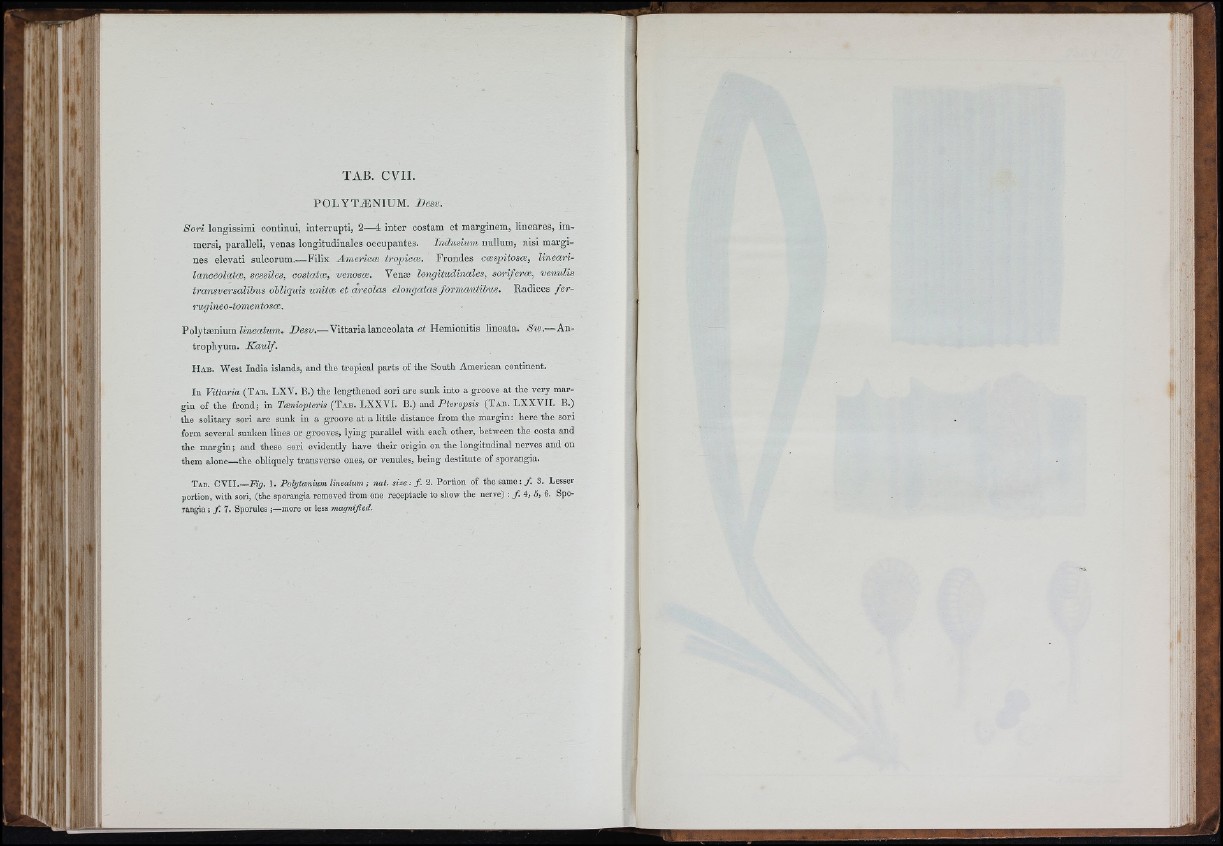
TAB. CVII.
P O L Y T Æ N IU M . D e sv .
S o r i longissimi continui, in te rrupti, 2 -4 inter costam e t marginem, lineares, immersi,
paralleli, venas longitudinales occupantes. In d u s ium nullum, nisi margines
elevati sulcorum Filix Amerioce tropicæ. Frondes coespitosoe, linearilanceolatæ,
sessiles, costatæ, venosæ. Venæ longitudinales, soriferæ, v enulis
transversàlihus ohliquis u n itæ et areolas elongatas fo rm a n tib u s. Radices fe r -
Tugineo-tomentosæ.
Polytænium D e sv .— Vittaria lanceolata ci Hemionitis lineata. S w .— Antrophyum.
K a u lf.
H ab. West India islands, and the tropical parts of the South American continent.
In Vittaria (T ab. LXV. B.) the lengthened sori are sunk into a groove at the very margin
of the frond; in Tæniopteris (T ab. LXXVI. B.) and Pteropsis (T a b . LXXVII. B.)
the solitary sori are sunk in a groove at a little distance from the margin : here the sori
form several sunken lines or grooves, lying parallel with each other, between the eosta and
the margin; and these sori evidently have their origin on the longitudinal nerves and on
them alone—the obliquely transverse ones, or venules, being destitute of sporangia.
Tab . C V I I .—K g . 1. Pohjtoenium linealum ; nat. size : f . 2. Portion of the same ; / . 3. Lesser
portion, with sori, (the sporangia removed from one receptacle to show the nerve) ; / , i , 5, 6. Sporangia
; f . 7. Sporules ¡—more or less magnified.
V